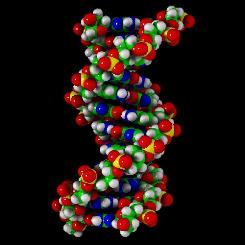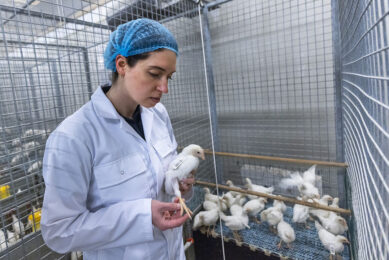Reason for Salmonella rise possibly due to altered DNA

There has been a considerable increase in the number of Salmonella serovar Typhimurium DT104 infections over the past 10 years.
This type of Salmonella is resistant to at least five different antibiotics, is transmitted via food and is considered to be dangerous for humans.. By comparing the DNA of Salmonella serovar Typhimurium DT104 with the known DNA code of another Salmonella strain, Dutch researcher Armand Hermans found new DNA fragments in DT104. These pieces of DNA were found to contain genetic information that might play a role in the survival and infectiousness of this pathogen. The presence of such extra genetic characteristics can make the pathogen stronger and more infectious.
The DNA of the pathogen says something about how it survives and is transmitted. When a pathogen reproduces, the DNA can change a bit and this can lead to changes in the genetic characteristics. This can, for example, lead to antibiotic resistance but also heat or acid resistance. The pathogens with the best genetic characteristics can spread and survive better and are therefore more infectious: the evolution of a pathogen.
Examining which genetic characteristics are present in an infectious Salmonella (in this case the DT104 type) can reveal how this pathogen has become stronger and caused more outbreaks. This information can also be used to make a less dangerous variant of this infectious Salmonella. Such a harmless variant can be used as a vaccine.
Related articles:
Salmonella becoming more common is US
Danish salmonella find in German poultry could spell trouble for EU
Czech Republic plan anti-salmonella campaign
Many EU egg farms contaminated with Salmonella
Salmonella becoming more common is US
Danish salmonella find in German poultry could spell trouble for EU
Czech Republic plan anti-salmonella campaign
Many EU egg farms contaminated with Salmonella
Join 31,000+ subscribers
Subscribe to our newsletter to stay updated about all the need-to-know content in the poultry sector, three times a week. Beheer
Beheer








 WP Admin
WP Admin  Bewerk bericht
Bewerk bericht